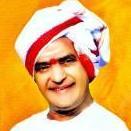People were interested in these podcasts
-
-
-
-
Popular Now
-
-
Tell a friend
-
-
Most viewed in last 30 days
-

-

-

-
 64
6411_MohanReddy · Started
-

-

-

-

-

-

-

-

-
 213
213vetrivel · Started
-

-

-

-

-

-

-

-





Recommended Posts
Join the conversation
You can post now and register later. If you have an account, sign in now to post with your account.